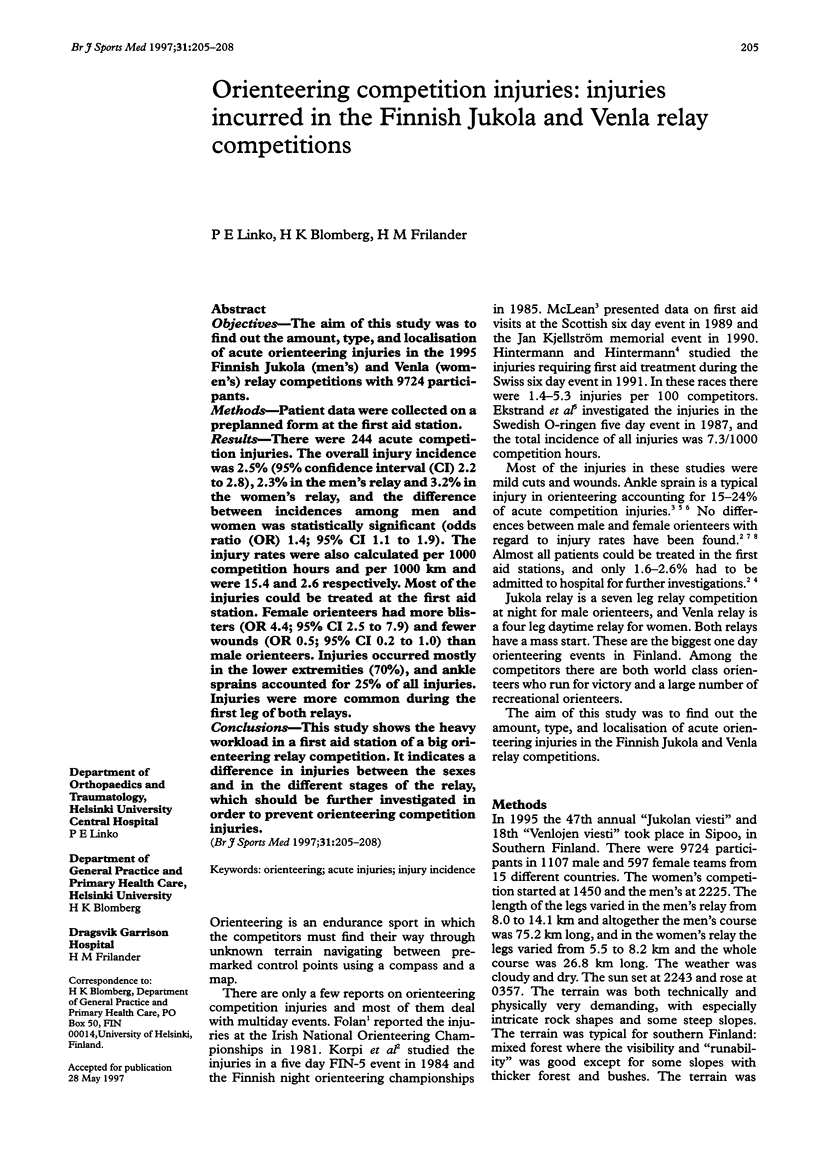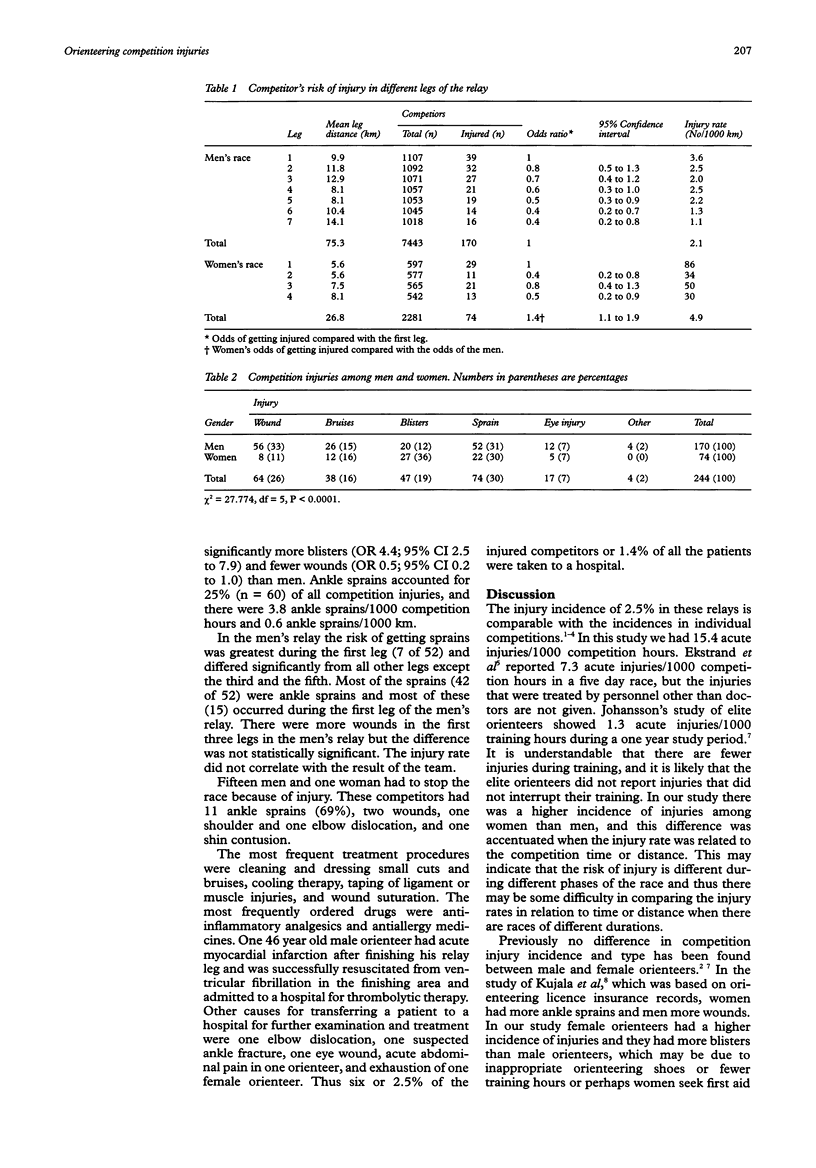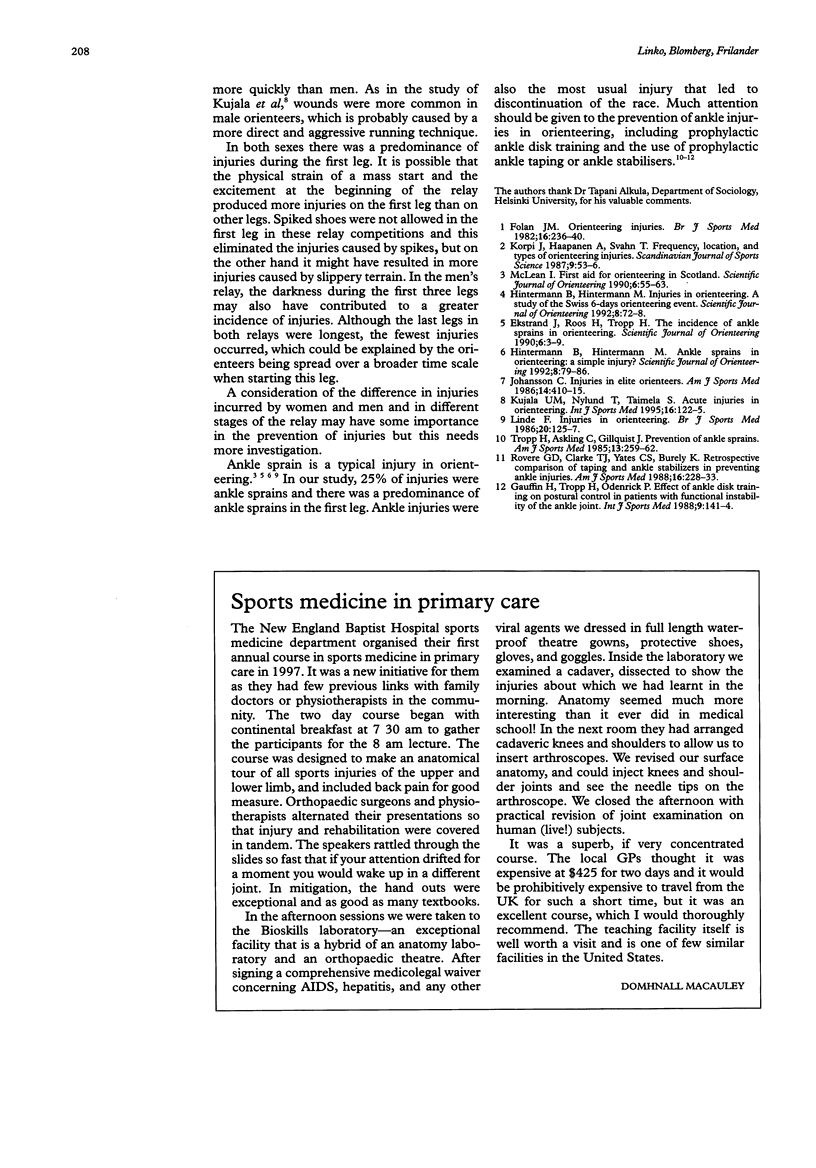Abstract
OBJECTIVES: The aim of this study was to find out the amount, type, and localisation of acute orienteering injuries in the 1995 Finnish Jukola (men's) and Venla (women's) relay competitions with 9724 participants. METHODS: Patient data were collected on a preplanned form at the first aid station. RESULTS: There were 244 acute competition injuries. The overall injury incidence was 2.5% (95% confidence interval (CI) 2.2 to 2.8), 2.3% in the men's relay and 3.2% in the women's relay, and the difference between incidences among men and women was statistically significant (odds ratio (OR) 1.4; 95% CI 1.1 to 1.9). The injury rates were also calculated per 1000 competition hours and per 1000 km and were 15.4 and 2.6 respectively. Most of the injuries could be treated at the first aid station. Female orienteers had more blisters (OR 4.4; 95% CI 2.5 to 7.9) and fewer wounds (OR 0.5; 95% CI 0.2 to 1.0) than male orienteers. Injuries occurred mostly in the lower extremities (70%), and ankle sprains accounted for 25% of all injuries. Injuries were more common during the first leg of both relays. CONCLUSIONS: This study shows the heavy workload in a first aid station of a big orienteering relay competition. It indicates a difference in injuries between the sexes and in the different stages of the relay, which should be further investigated in order to prevent orienteering competition injuries.
Full text
PDF



Images in this article
Selected References
These references are in PubMed. This may not be the complete list of references from this article.
- Folan J. M. Orienteering injuries. Br J Sports Med. 1982 Dec;16(4):236–240. doi: 10.1136/bjsm.16.4.236. [DOI] [PMC free article] [PubMed] [Google Scholar]
- Gauffin H., Tropp H., Odenrick P. Effect of ankle disk training on postural control in patients with functional instability of the ankle joint. Int J Sports Med. 1988 Apr;9(2):141–144. doi: 10.1055/s-2007-1024996. [DOI] [PubMed] [Google Scholar]
- Johansson C. Injuries in elite orienteers. Am J Sports Med. 1986 Sep-Oct;14(5):410–415. doi: 10.1177/036354658601400515. [DOI] [PubMed] [Google Scholar]
- Kujala U. M., Nylund T., Taimela S. Acute injuries in orienteerers. Int J Sports Med. 1995 Feb;16(2):122–125. doi: 10.1055/s-2007-972977. [DOI] [PubMed] [Google Scholar]
- Linde F. Injuries in orienteering. Br J Sports Med. 1986 Sep;20(3):125–127. doi: 10.1136/bjsm.20.3.125. [DOI] [PMC free article] [PubMed] [Google Scholar]
- Rovere G. D., Clarke T. J., Yates C. S., Burley K. Retrospective comparison of taping and ankle stabilizers in preventing ankle injuries. Am J Sports Med. 1988 May-Jun;16(3):228–233. doi: 10.1177/036354658801600305. [DOI] [PubMed] [Google Scholar]
- Tropp H., Askling C., Gillquist J. Prevention of ankle sprains. Am J Sports Med. 1985 Jul-Aug;13(4):259–262. doi: 10.1177/036354658501300408. [DOI] [PubMed] [Google Scholar]



